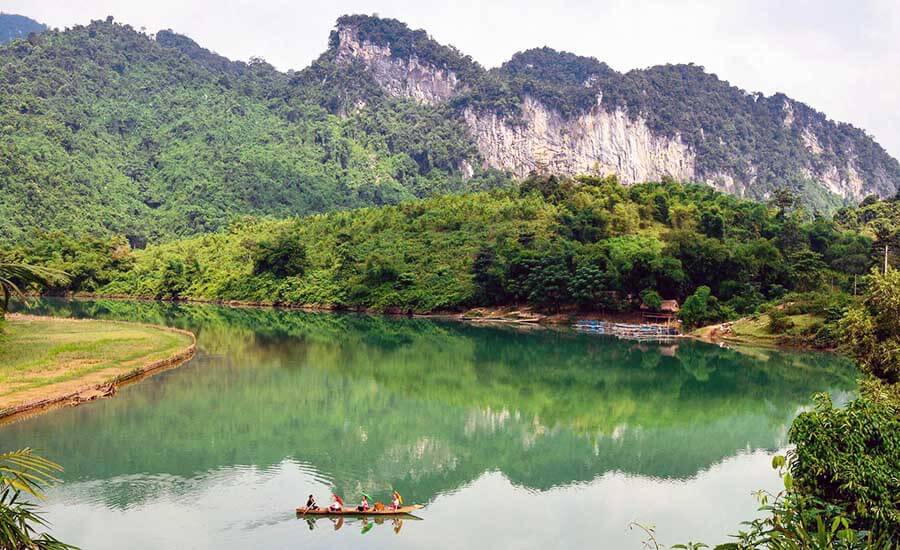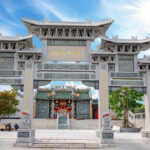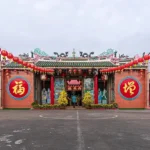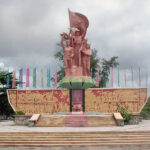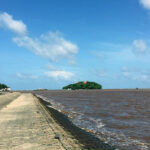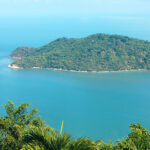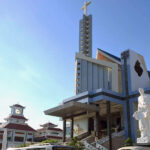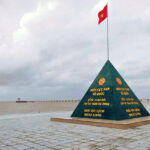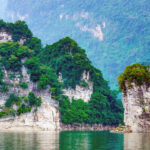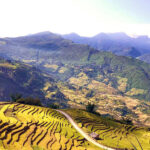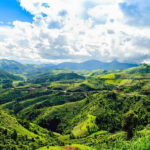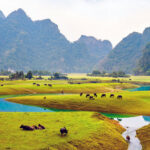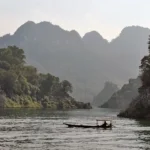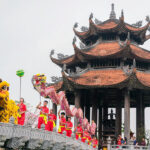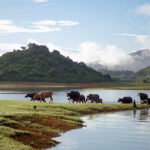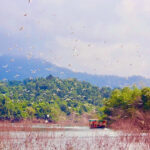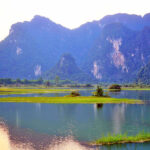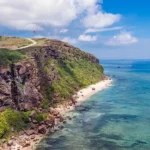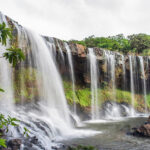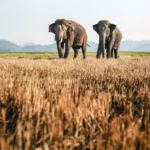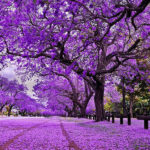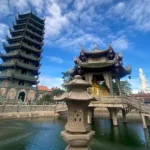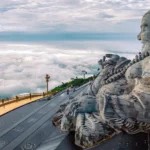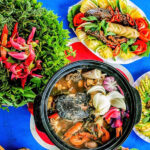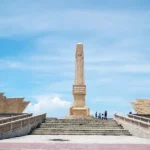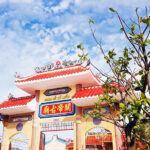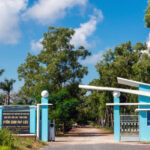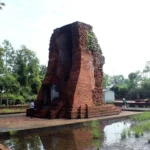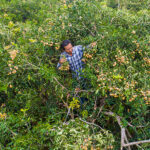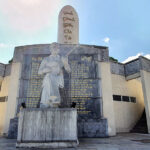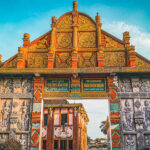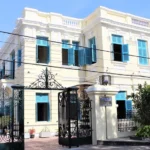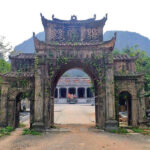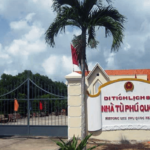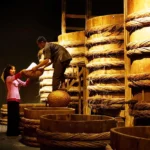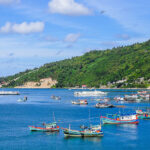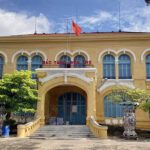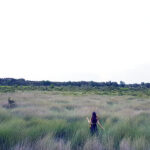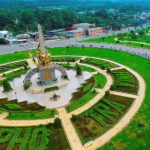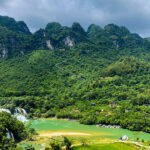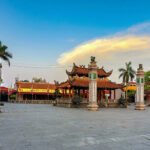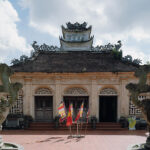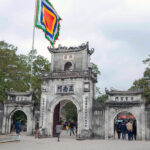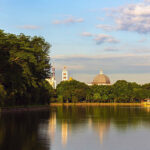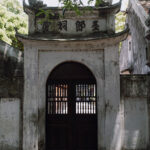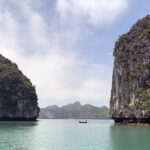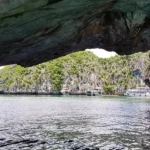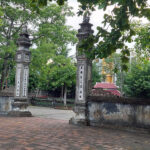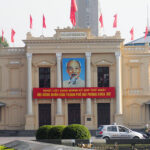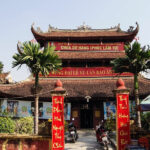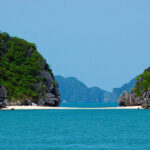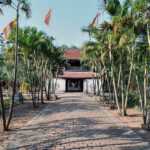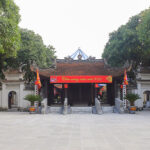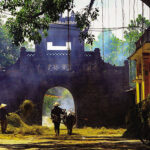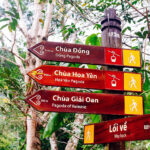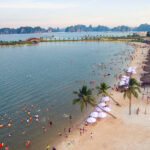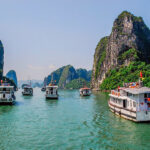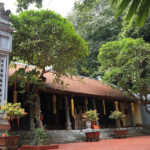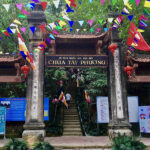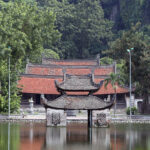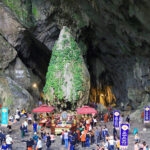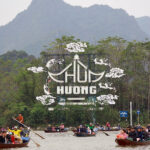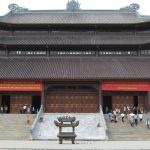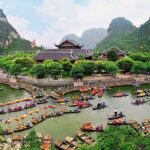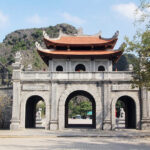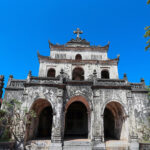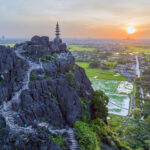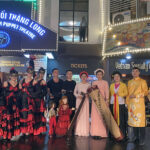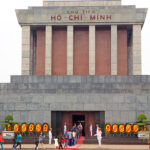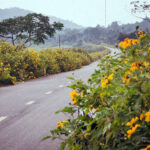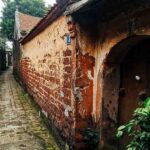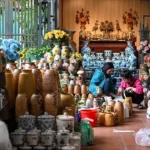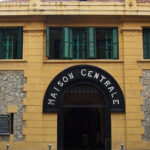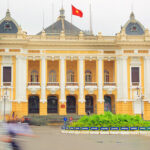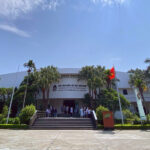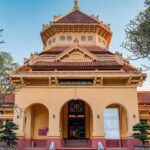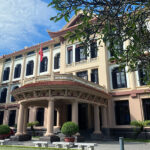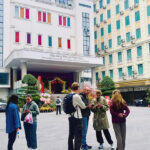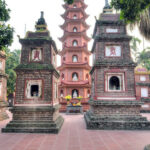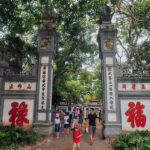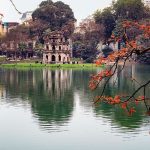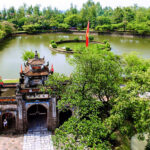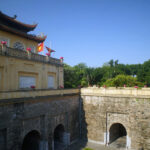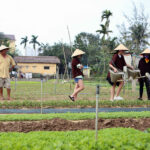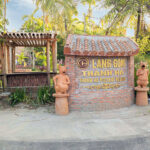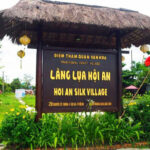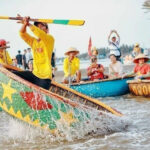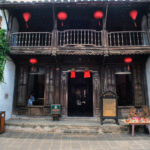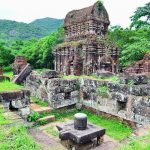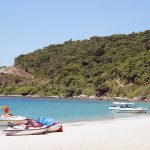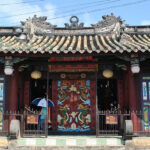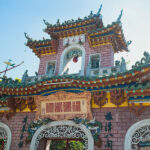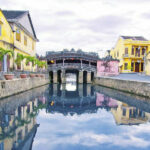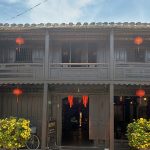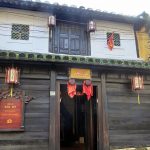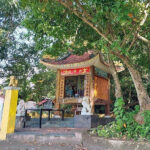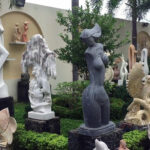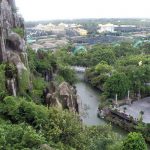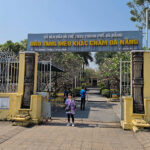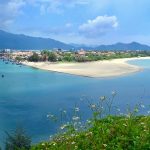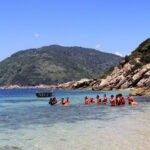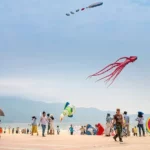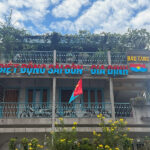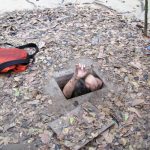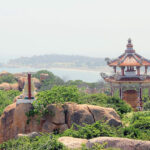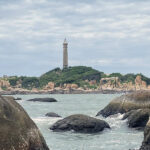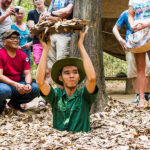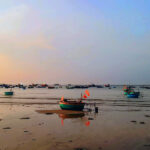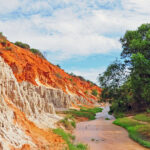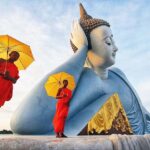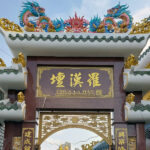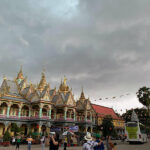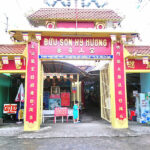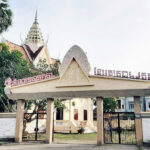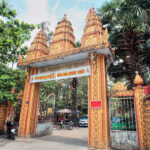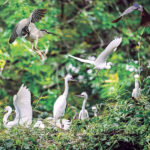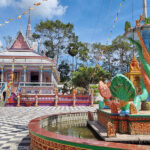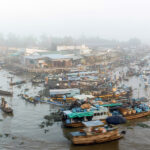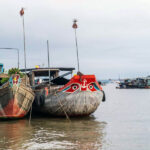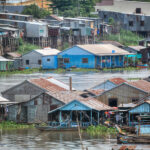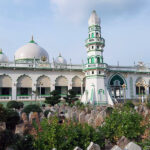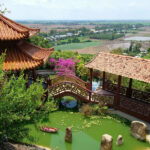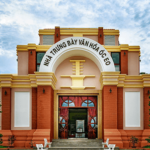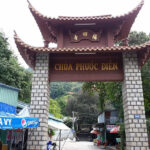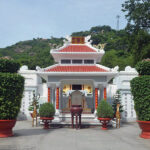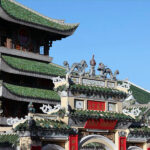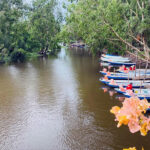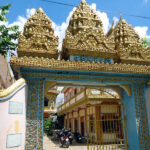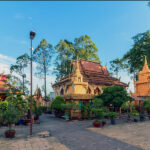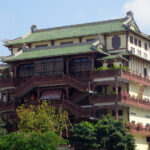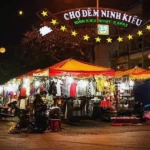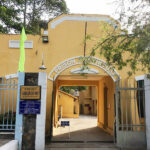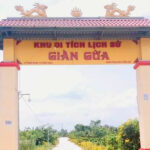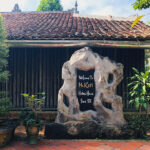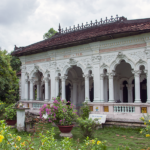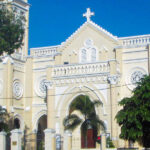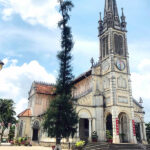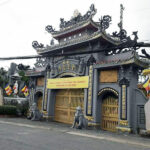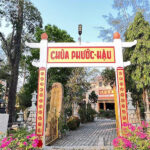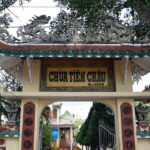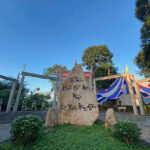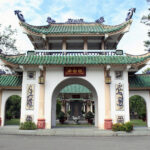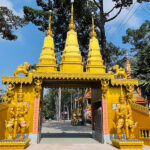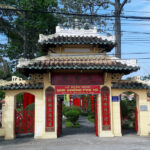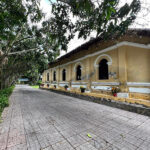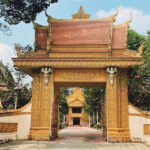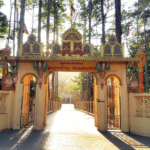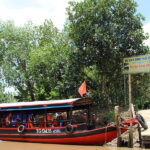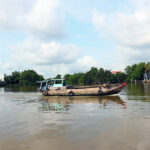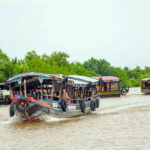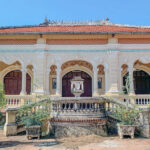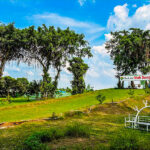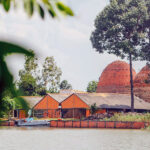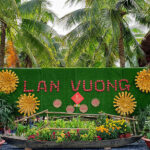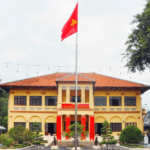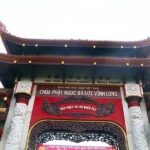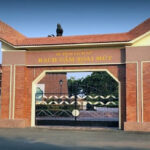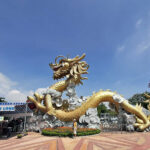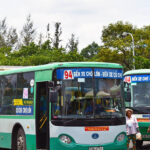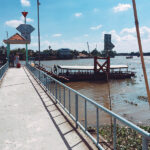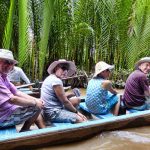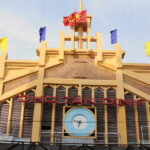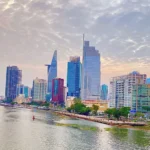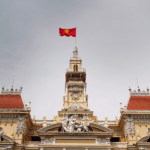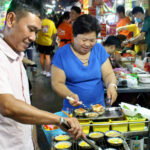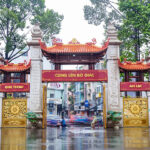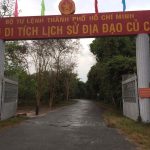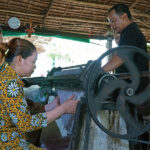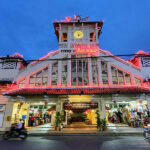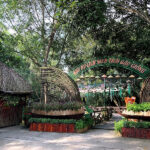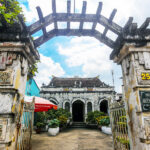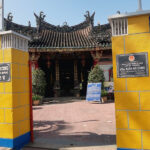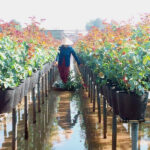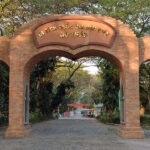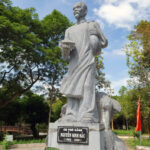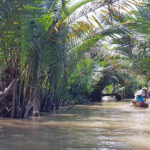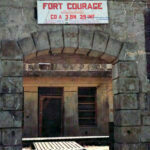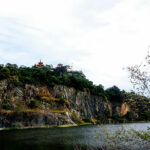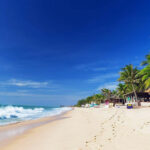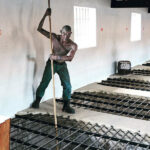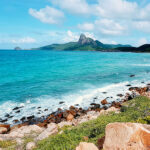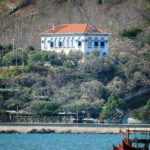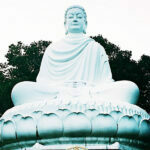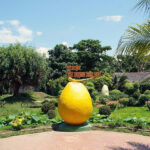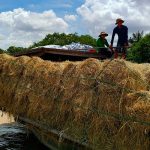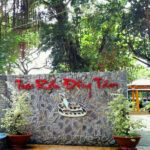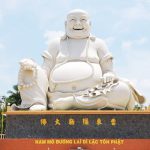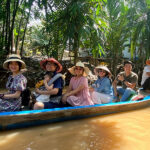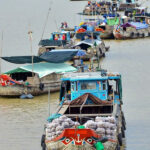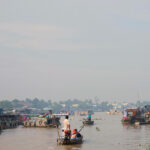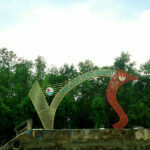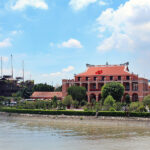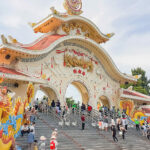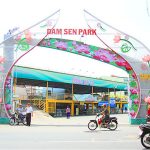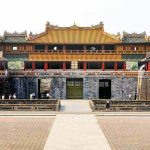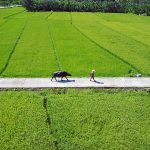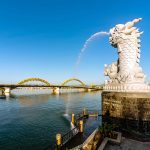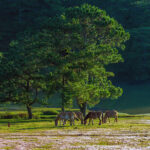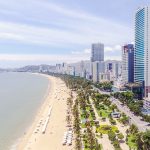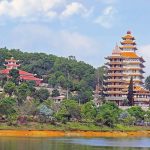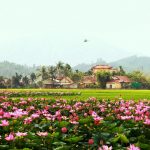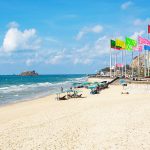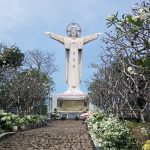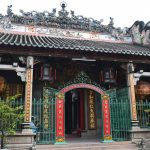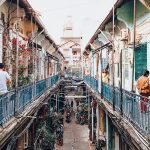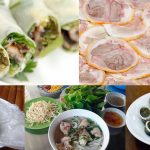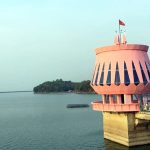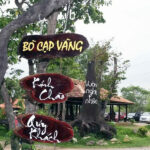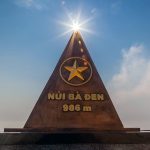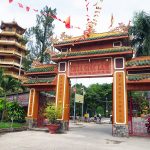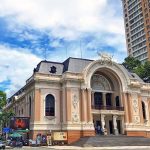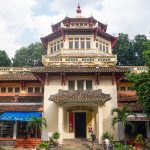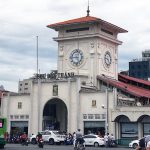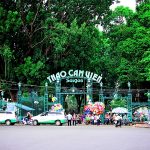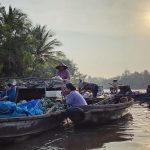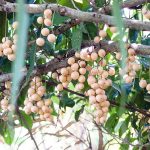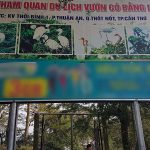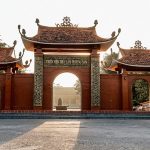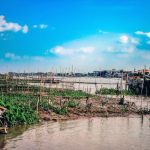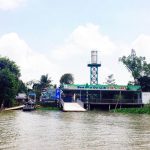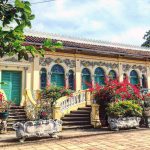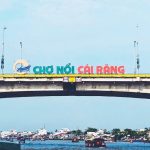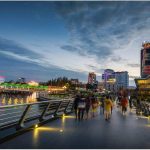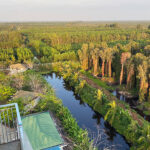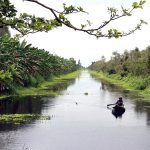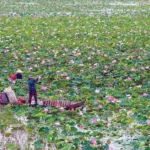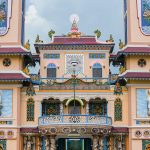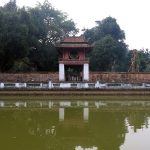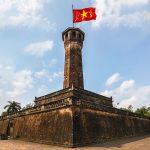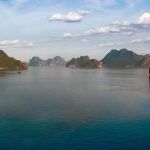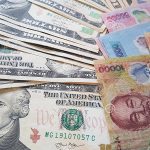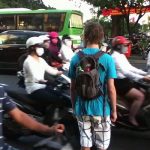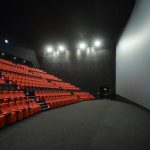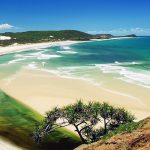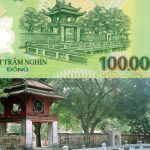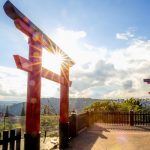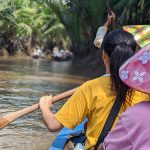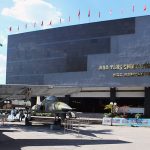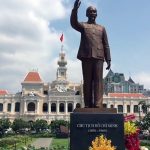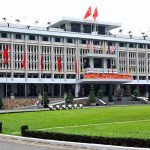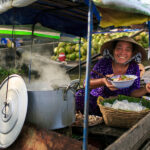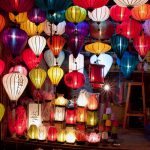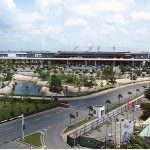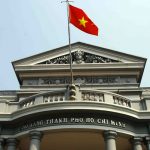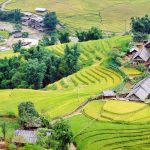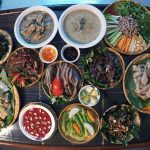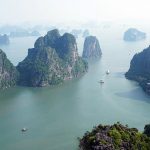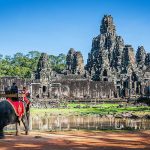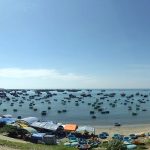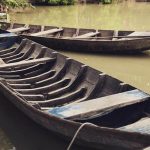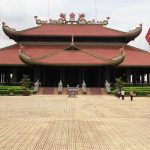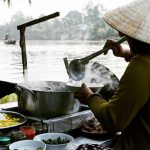Nghe An possesses a diverse terrain from high mountains, plains, midlands to an 82 km long coastline with many beautiful beaches, nature reserves… The beauty of this land is passed down in the Vietnamese folk song means “The green mountains and turquoise waters look like a painting”.
Table of Contents
General information about Nghe An
Nghe An is a coastal province near the northernmost part of the North Central region, Central Vietnam. The east borders the Gulf of Tonkin; west borders Hua Phan, Xieng Khouang and Bolikhamsai provinces (Laos); the south borders Ha Tinh province; and the north borders Thanh Hoa province. The administrative center of the province is Truong Vinh ward, located 291 km south of Hanoi.
What is the best time to visit Nghe An?
Nghe An has four distinct seasons. Spring is cool and warm with an average temperature of 22-29 degrees Celsius (January-March); Summer is hot, 33-38 degrees Celsius (April-June); autumn is cold, rainy, 22-28 degrees Celsius; winter is cold, windy, 17-20 degrees Celsius (October-December).
If you want to go on vacation and swim in the sea, the best time to visit is summer. If you want to visit, participate in festivals, hike… come in spring and autumn.
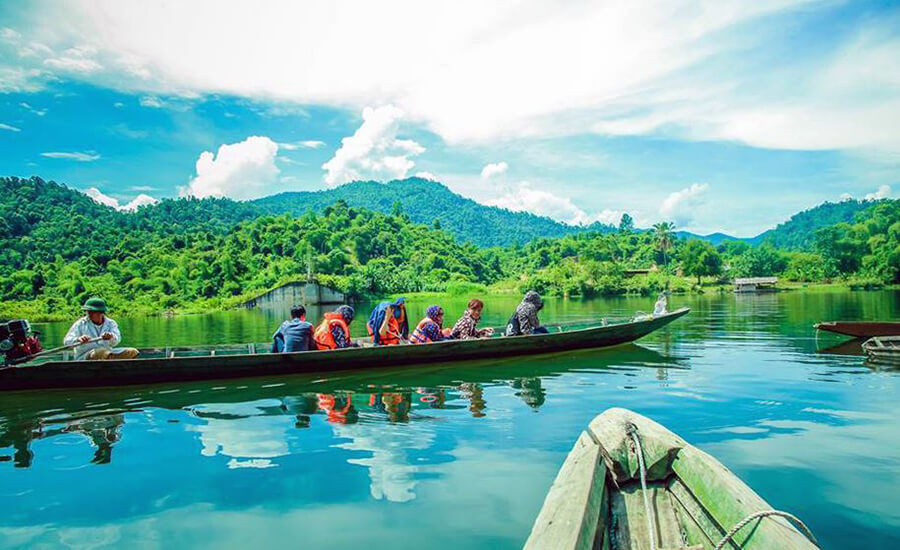
Pu Mat national park (photo source: collected).
If you want to hunt for flowers, come in the sunflower season from December to near Tet holiday. At this time, the whole flower field blooms in a brilliant yellow color to get the most beautiful photos.
Accommodation in Nghe An
Nghe An has many 3 to 5 star accommodations such as Vinpearl Cua Hoi, Muong Thanh hotel system, Saigon Kim Lien, Summer… Prices of these hotels range from about 1,000,000 VND to 3,000,000 VND per night.
Some suggested hotels are Hai Dang, Xanh, Tien Anh, Thai Binh Duong… in Cua Lo; Lam Hong, Beijing… in Truong Vinh ward. Room rates start from 400,000 VND per night.
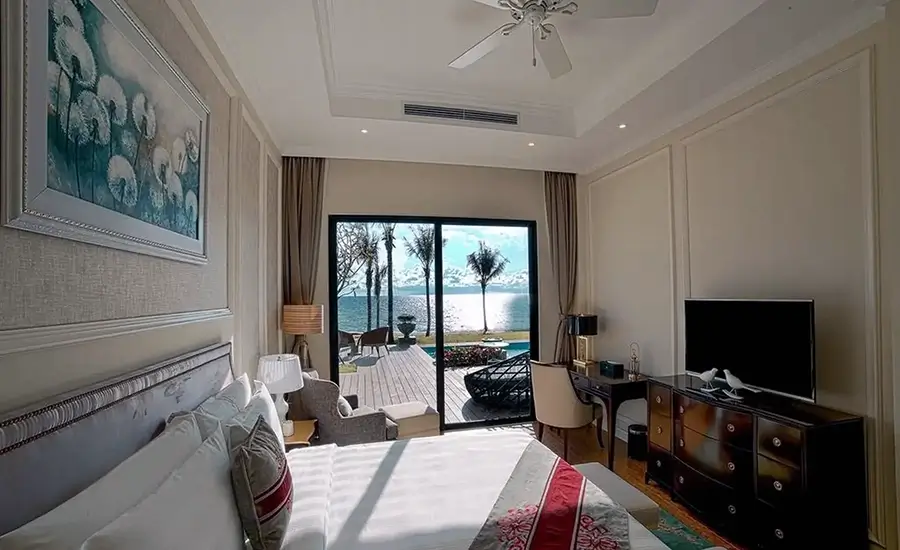
photo source: booking
In addition, when coming to Nghi Loc area, visitors can stay at Bai Lu Resort. This is a place with fresh, cool air. You can swim in the sea, walk along the pine forests to watch the sunrise at Bai Lu Heaven Gate, or meditate and light an incense stick at the Sakyamuni Buddha Statue…
Tourist attractions in Nghe An
Nghe An is one of the largest province in Vietnam, with an area of over 16,400 km². Therefore, to visit all the places, you may need a week. However, visitors can choose destinations close together for convenience. If you only want to go swimming, the ideal time is three days and two nights.
The Native Land of President Ho Chi Minh
Sen village (the homeland of Ho Chi Minh’s father)
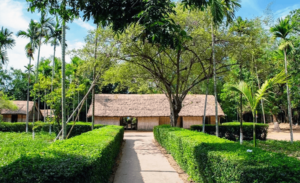 Starting from ward center of Nghe An, take Road N45 until the 13km, then turn into a red earth path lined with eucalyptus and casuarinas trees. The path lead you to Sen, also know as Kim Lien (Golden Lotus), village where there are many lotus ponds. The thatched cottage where President Ho Chi Minh used to living during his childhood is built from bamboo and wood. It has give compartments. The interior furniture is similar to that of other farmers’s houses: a wooden bed, a bamboo chong (a bamboo bed without raised walls at the two ends), a hammock made from hemp, and an altar. It was built in 1901 with the help and donations of the villagers as a present to Nguyen Sinh Sac, President Ho Chi Minh’s father, when he gained the doctoral title the court exam, which glorified his village.
Starting from ward center of Nghe An, take Road N45 until the 13km, then turn into a red earth path lined with eucalyptus and casuarinas trees. The path lead you to Sen, also know as Kim Lien (Golden Lotus), village where there are many lotus ponds. The thatched cottage where President Ho Chi Minh used to living during his childhood is built from bamboo and wood. It has give compartments. The interior furniture is similar to that of other farmers’s houses: a wooden bed, a bamboo chong (a bamboo bed without raised walls at the two ends), a hammock made from hemp, and an altar. It was built in 1901 with the help and donations of the villagers as a present to Nguyen Sinh Sac, President Ho Chi Minh’s father, when he gained the doctoral title the court exam, which glorified his village.
Chua Village (the homeland of Ho Chi Minh’s mother)
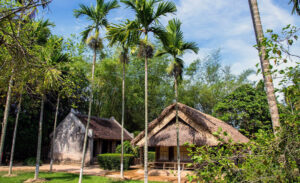 Located two kilometers from Sen village, Chua village is just as peaceful as other Vietnamese villages. But it is famous, both domestically and internationally, as President Ho Chi Minh’s maternal homeland and the place where he was born and brought up by his mother.
Located two kilometers from Sen village, Chua village is just as peaceful as other Vietnamese villages. But it is famous, both domestically and internationally, as President Ho Chi Minh’s maternal homeland and the place where he was born and brought up by his mother.
The relic cluster of President Ho Chi Minh’s birthplace in Chua village is located in a 3,500m² garden. There are three houses, two thatched houses, one tiled house, each house has very sacred relics, because it revives memories of President Ho Chi Minh’s childhood.
The worship House – Mr. Hoang Duong’s house
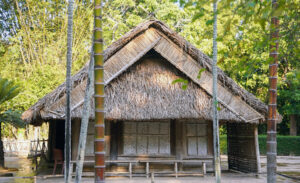 Mr. Hoang Duong, President Ho Chi Minh’s maternal grandfather, built this simple cottage in 1882 to make a place for worshipping his paternal great grandfather, grandfather, and father. The altar is decorated in a simple but solemn fashion. Attractive to visitors is the pair of parallel sentences hung in the front of the house which praise the family clan’s fame.
Mr. Hoang Duong, President Ho Chi Minh’s maternal grandfather, built this simple cottage in 1882 to make a place for worshipping his paternal great grandfather, grandfather, and father. The altar is decorated in a simple but solemn fashion. Attractive to visitors is the pair of parallel sentences hung in the front of the house which praise the family clan’s fame.
The house has five compartments and two lean-tos. Three out compartments adjoin with the worship house, so it is well ventilated Mr. Hoang Duong used to teach his students while sitting on the wooden bed placed in the first compartment.
In the second compartment, there is a bamboo sofa and a table where he placed his pen-brushes an ink-slab. He and his students would take a rest on the bed put in the third compartment.
The remaining two compartments were used as his wife’s bedroom and family’s living room.
The tomb of Mrs. Hoang Thi Loan (1863-1901)
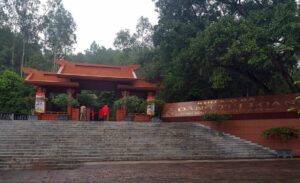 Mrs. Hoang Thi Loan was the mother of many patriotic children, including Nguyen Sinh Cung, who late became President Ho Chi Minh.
Mrs. Hoang Thi Loan was the mother of many patriotic children, including Nguyen Sinh Cung, who late became President Ho Chi Minh.
In 1985, on the occasion of President Ho Chi Minh 95th birthday anniversary, the people in Nghe An Province built her tomb on Mount Dong Tranh. From the mount foot, visitors will have to climb nearly 300 stone steps leading to the tomb. Above it is a concrete roof stylised as the loom with which Mrs. Hoang Thi Loan used to weave cloth to earn a living and feed her children.
Scared temples and pagodas
Bach Ma Temple
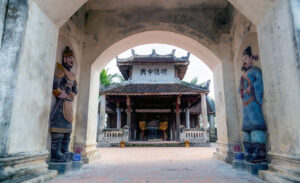 Bach Ma Temple worships Phan Da, a young general who made great contributions to the resistance war against the Ming army in the 15th century. He died at the age of 24. Bach Ma is named after the white horse that General Phan Da often rode into battle.
Bach Ma Temple worships Phan Da, a young general who made great contributions to the resistance war against the Ming army in the 15th century. He died at the age of 24. Bach Ma is named after the white horse that General Phan Da often rode into battle.
Bach Ma Temple is currently located on a 4,894m² campus in Tan Ha village, Kim Bang Commune. This is a beautiful, unique architectural complex with a harmonious layout and many sophisticated carvings according to folk themes. The temple also preserves many rare documents and artifacts, adding to the historical and spiritual value of the relic.
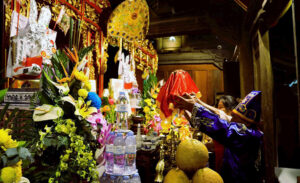
The Bach Ma Temple relic site has a main temple consisting of five buildings with a complete three-door gate, ceremonial gate, left and right wings, lower hall, middle hall and upper hall, arranged harmoniously to create a majestic and respectful look. Most of the wooden details are elaborately carved and sculpted with decorative themes: fish transforming into dragons, phoenix holding a scroll, two dragons fighting over a flaming pearl … The temple also preserves many rare artifacts: a golden house, a silver house, a set of bronze bells (38 pieces), a red-lacquered and gilded phoenix statue…
The traditional festival of Bach Ma Temple is held on the 9th and 10th of the second lunar month, attracting thousands of people and tourists from all over to worship, pay homage to the merits of “God Bach Ma” and participate in healthy and joyful traditional folk games.
Qua Son Temple
Qua Son Temple was formerly located in Bach Ngoc commune, Nghe An. The temple worships Ly Nhat Quang, the 8th son of King Ly Thai To, who made great contributions to the economic and political development of Nghe An region. To commemorate his great contributions, the local people built many temples and shrines to worship and remember his merits for life, of which Qua Son Temple is considered the main temple.
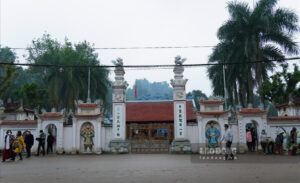 After many historical ups and downs with the changes of time; many restorations and embellishments, Qua Son Temple has become a spiritual destination for people and tourists from all over the world.
After many historical ups and downs with the changes of time; many restorations and embellishments, Qua Son Temple has become a spiritual destination for people and tourists from all over the world.
The Qua Son Temple Festival is held from January 18 to 20 every year. The festival space is expanded with many cultural and sports activities, including volleyball exchanges, tug of war, stick pushing, wrestling, chess playing, boat racing… In 1999, the temple was ranked as a “National historical and cultural relic”.
The Nine-compartment Temple
The Nine-compartment temple is designed in the traditional stilt house style of the Thai people, consisting of 9 rooms. The temple is 16.5m long and 8.4m wide. This is a work that harmoniously combines the typical architectural features of the Thai ethnic group, with two staircases, each with 9 steps.
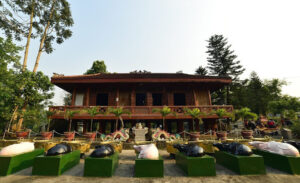 In the temple, the offerings are arranged according to customs and practices and have strict regulations. The interior decoration depends on the rooms, the main room is to worship Heaven; the daughter of Heaven and the person who built the village and established the Muong. The remaining 8 rooms are the same, each room has an altar, a brocade umbrella and a water pipe. The unique feature of the Nine-compartment Temple relic is its historical and cultural value associated with folk beliefs, worshiping the Mother Goddess, worshiping the person who built the village and established the Muong. Visitors can immerse themselves in spiritual life, praying for peace, health, fame, happiness, prosperity…
In the temple, the offerings are arranged according to customs and practices and have strict regulations. The interior decoration depends on the rooms, the main room is to worship Heaven; the daughter of Heaven and the person who built the village and established the Muong. The remaining 8 rooms are the same, each room has an altar, a brocade umbrella and a water pipe. The unique feature of the Nine-compartment Temple relic is its historical and cultural value associated with folk beliefs, worshiping the Mother Goddess, worshiping the person who built the village and established the Muong. Visitors can immerse themselves in spiritual life, praying for peace, health, fame, happiness, prosperity…
Every year, from February 14 to 16 (Lunar calendar), the Nine-Garden Temple Festival takes place, the largest spiritual and tourism festival in the region, attracting tens of thousands of visitors from all over.
Cuong Temple
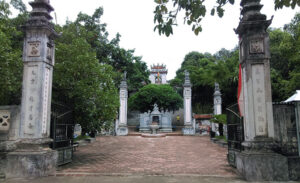 Cuong Temple is one of the temples worshiping An Duong Vuong, located on Mo Da Mountain in An Chau Commune, Nghe An Province.
Cuong Temple is one of the temples worshiping An Duong Vuong, located on Mo Da Mountain in An Chau Commune, Nghe An Province.
Cuong Temple is located on the back of Mo Da Mountain, close to National Highway 1, behind is Cua Hien Beach. On the top of Mo Da Mountain, people also built a shrine to worship Princess My Chau and people still call it My Chau Shrine. Today, Cuong Temple is both a scenic spot and a sacred place of worship for the people here. Every year, on the 14th, 15th, and 16th of the second lunar month, local people celebrate the Cuong Temple Festival with many rich and diverse cultural activities.
Co Am Pagoda
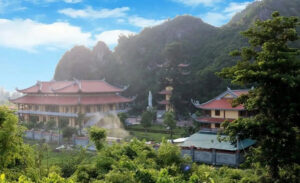 Co Am Pagoda is located in Minh Chau commune, and is considered one of the most beautiful pagodas in Nghe An province.
Co Am Pagoda is located in Minh Chau commune, and is considered one of the most beautiful pagodas in Nghe An province.
First of all, in terms of location, the pagoda is located in the middle of a purely agricultural countryside, with green, winding rice fields. The pagoda is located in the Len Hai Vai relic complex. According to the Chinese characters carved on the stone pillars in front of the main hall, the pagoda was built in the Later Le dynasty (1428-1789, more than 600 years ago.
The pagoda’s architecture is imbued with traditional style with curved tiled roofs, brick walls, and corridors paved with red Bat Trang tiles.
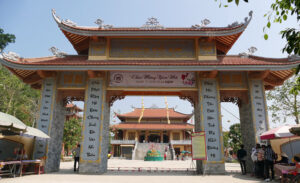
The center of the pagoda is Dai Hung Bao Dien, designed in the traditional Vietnamese style, two stories high, the upper floor is the main hall for daily rituals. The main hall worshiping Buddha is solemnly decorated, with many precious ancient statues. The highlight here is the gilded statue of Buddha Sakyamuni, over 5 meters high.
The Arhat Garden is located on the side of the main hall, at the foot of the mountain, with a relief statue of Buddha Sakyamuni, carved directly on the surface of the rock mountain, around the Buddha platform are arranged 18 Arhats made of green stone. Walking lightly along the paths up the mountain, is the Nhu Y cave, where a statue of Bodhisattva and a statue of Anathapindika are enshrined. The highlight on this mountain is the largest statue of Bodhisattva in Nghe An. What is special, this statue has 3 faces facing 3 different directions, extremely unique.
For a long time, the pagoda has been a spiritual destination for many Buddhists from all over the world. Visit the temple, participate in major ceremonies at the temple such as Vu Lan (Ghost) festival, Buddha’s birthday…
Dai Tue Pagoda
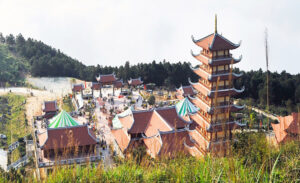 Dai Tue Pagoda is 6,000 m² wide, located on the top of Thang Thien cave, in Dai Hue mountain range, Dai Hue commune, at an altitude of 500 m above sea level, is a famous scenic spot of Nghe An.
Dai Tue Pagoda is 6,000 m² wide, located on the top of Thang Thien cave, in Dai Hue mountain range, Dai Hue commune, at an altitude of 500 m above sea level, is a famous scenic spot of Nghe An.
According to legend, the pagoda was built during the reign of King Mai Hac De when he fought against the Tang army (627 AD).
The items at the pagoda include the main hall, the ancestral hall, the Ngu De temple, the memorial hall, the monk’s quarters… each building has an area of 250-1,200 m².
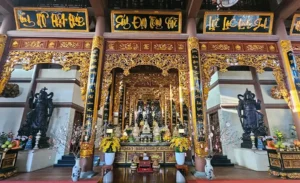 The outstanding architectural work at the pagoda is the 9-storey Dai Tue tower, 32 m high, worshiping Buddha and national heroes. In the main hall, the ancestral hall and the Ngu De temple are placed 32 Buddha statues made from solid mulberry wood. Around the shrines are arranged a system of parallel sentences in pure Vietnamese calligraphy.
The outstanding architectural work at the pagoda is the 9-storey Dai Tue tower, 32 m high, worshiping Buddha and national heroes. In the main hall, the ancestral hall and the Ngu De temple are placed 32 Buddha statues made from solid mulberry wood. Around the shrines are arranged a system of parallel sentences in pure Vietnamese calligraphy.
On February 19, 2016, the Vietnam Record Association confirmed 4 Vietnamese records for Dai Tue Pagoda, including: the pagoda with the most ruby statues, the most monolithic mulberry wood statues, the most parallel sentences in pure Vietnamese calligraphy, and the pagoda on the mountain with the largest artificial lake (350m² wide).
Historical and cultural relic
Tomb and Mai Hac De Temple relic
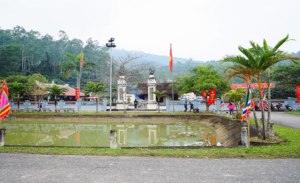 The relic complex includes the mausoleum and Mai Hac De temple, both in Van An commune. The Mai Hac De relic site was ranked as a national historical and cultural relic in 1996.
The relic complex includes the mausoleum and Mai Hac De temple, both in Van An commune. The Mai Hac De relic site was ranked as a national historical and cultural relic in 1996.
The Hoan Chau uprising led by Mai Thuc Loan took place in 713, liberating a large area of land in Nghe An. After this event, he was honored as emperor (named Mai Hac De). In 722, the Tang army returned to suppress the uprising, was besieged, Mai Hac De fled into the forest and died there in 723.
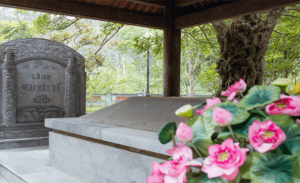 The tomb of King Mai is more than 10,000 m² wide, located in Hung Son valley, near Lam river, in Ha Long residential group, Van An commune.
The tomb of King Mai is more than 10,000 m² wide, located in Hung Son valley, near Lam river, in Ha Long residential group, Van An commune.
This is the burial place of Mai Hac De. During the Hoan Chau uprising, the valley was chosen as the center of the base.
The project was built according to the design of the temple above, the tomb below. The front is the lower hall, behind is the middle hall, the upper hall, the two sides include the left wing, the right wing, the waiting house… Over time, the items have been restored and decorated majestically. Around the campus are many shady trees.
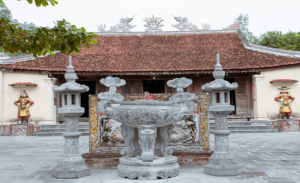
Inside the halls, the area is 50-70 m² wide, the frame is made of wood, around are the altar, the statue of Mai Hac De and some artifacts related to the Hoan Chau uprising. Behind the upper hall is King Mai’s tomb. The items are built of concrete, with a roof above, in front of the tomb are many vases of flowers.
To commemorate the merits of King Mai Hac De, every January of the lunar calendar, at the relic site, local people often organize the King Mai Festival with many rituals such as offering incense, water procession, opening ceremony, announcing and many folk games such as wrestling, chess, cockfighting, stick pushing, tug of war…
Milestone Km 0
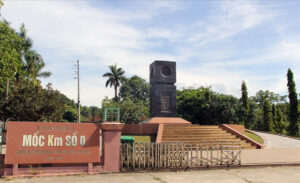 Milestone Km 0 located in Tan Ky commune is the starting point of the motor transport route on the Ho Chi Minh trail from 1972 to 1975. At the end of 1972, the construction of the Eastern Truong Son transport route from Tan Ky to Loc Ninh (Dong Nai province) with a length of 1,900 km took place here. The transport route on the Ho Chi Minh trail has contributed to speeding up the transport of equipment, necessities as well as people, speeding up the process of liberating the South and unifying the country. Today, the Truong Son road – Ho Chi Minh road has been built to become a vital road connecting the North and the South, serving the cause of industrialization and modernization of the country. Currently, the milestone has been renovated, the campus has an area of 600 m² with a traditional house displaying artifacts from the war and many images recording the history of the opening of the Ho Chi Minh trail.
Milestone Km 0 located in Tan Ky commune is the starting point of the motor transport route on the Ho Chi Minh trail from 1972 to 1975. At the end of 1972, the construction of the Eastern Truong Son transport route from Tan Ky to Loc Ninh (Dong Nai province) with a length of 1,900 km took place here. The transport route on the Ho Chi Minh trail has contributed to speeding up the transport of equipment, necessities as well as people, speeding up the process of liberating the South and unifying the country. Today, the Truong Son road – Ho Chi Minh road has been built to become a vital road connecting the North and the South, serving the cause of industrialization and modernization of the country. Currently, the milestone has been renovated, the campus has an area of 600 m² with a traditional house displaying artifacts from the war and many images recording the history of the opening of the Ho Chi Minh trail.
Temple of Hoang Muoi
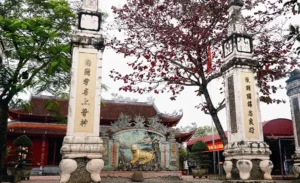 Temple and tomb of Ong (Mr) Hoang Muoi in Xuan Am village, Thinh My commune, about 3km from Truong Vinh ward.
Temple and tomb of Ong (Mr) Hoang Muoi in Xuan Am village, Thinh My commune, about 3km from Truong Vinh ward.
According to legend, the Hoang Muoi Temple was built in the Later Le Dynasty (1634), a place to worship the gods of fortune in the Vietnamese Mother Goddess worship. The main character worshiped is Hoang Muoi, along with other gods and the system of saints in the Mother Goddess worship, headed by Saint Mother Lieu Hanh.
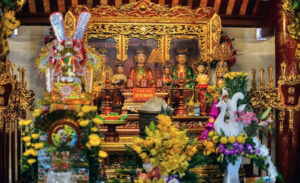 The main area of the temple is divided into three halls: the Upper Hall, the Middle Hall and the Lower Hall, bearing the architectural style of the Nguyen Dynasty. The later construction materials were mainly wood, elaborately carved with symbolic motifs such as dragons, unicorns, turtles, and phoenixes, demonstrating the sophistication and talent of Nghe An artisans. About 100 meters east of the temple is his tomb, this is a unique feature that only Ong Hoang Muoi temple in Nghe An has.
The main area of the temple is divided into three halls: the Upper Hall, the Middle Hall and the Lower Hall, bearing the architectural style of the Nguyen Dynasty. The later construction materials were mainly wood, elaborately carved with symbolic motifs such as dragons, unicorns, turtles, and phoenixes, demonstrating the sophistication and talent of Nghe An artisans. About 100 meters east of the temple is his tomb, this is a unique feature that only Ong Hoang Muoi temple in Nghe An has.
Currently, the temple still preserves many rare documents and artifacts, including 21 royal decrees, Chinese versions of the sacred stories, and a system of statues with both historical and aesthetic value, contributing to enriching the spiritual cultural heritage of Nghe An. The festival officially to be held on the 9th and 10th of the 10th lunar month every year.
Nature and wildlife areas
Pu Mat National Park
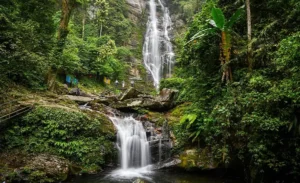 About 130km west of Vinh City is Pu Mat National Park. Visitors come here by three routes: National Highway 7, 15 or Ho Chi Minh Road. Located in the world biosphere reserve recognized by UNESCO in 2007, this is a nature reserve with a rich flora and fauna. Visitors can immerse themselves in the space of wild nature, row a boat on the river, visit Pha Lai dam, Khe Kem waterfall, enjoy local cuisine such as Giang river fish, bamboo rice…
About 130km west of Vinh City is Pu Mat National Park. Visitors come here by three routes: National Highway 7, 15 or Ho Chi Minh Road. Located in the world biosphere reserve recognized by UNESCO in 2007, this is a nature reserve with a rich flora and fauna. Visitors can immerse themselves in the space of wild nature, row a boat on the river, visit Pha Lai dam, Khe Kem waterfall, enjoy local cuisine such as Giang river fish, bamboo rice…
Near Pu Mat National Park is Con Cuong town – a place known to tourists as a highlight of community ecotourism in western Nghe An. Coming here, you can rest, live in local people’s houses, listen to folk songs, drink rice wine, and eat Thai specialties.
Cua Lo Beach
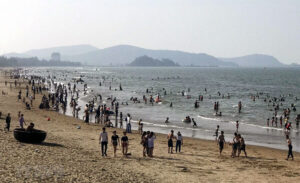 About 16km east of ward center is Cua Lo beach. This place is considered to have an ideal space for activities such as swimming, playing volleyball, playing golf, rowing basket boats to go squid fishing at night. There are many high-class resorts around this area as well as beautiful photo spots.
About 16km east of ward center is Cua Lo beach. This place is considered to have an ideal space for activities such as swimming, playing volleyball, playing golf, rowing basket boats to go squid fishing at night. There are many high-class resorts around this area as well as beautiful photo spots.
One of them is the infinity pool at Summer Hotel, Lan Chau Island Rock Beach… Visitors should not miss the seafood at the seafood restaurants on the Binh Minh coastal road, eat the famous jumping squid dish.
Quynh Beach
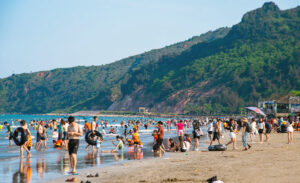 About 80km north of ward city, Quynh Beach belongs to Quynh Luu District and Hoang Mai Town. Quynh Beach is not actually the name of a beach but refers to 7 adjacent beaches: Quynh Phuong, Quynh Lien, Quynh Bang, Quynh Luong, Quynh Minh, Quynh Nghia and Tien Thuy.
About 80km north of ward city, Quynh Beach belongs to Quynh Luu District and Hoang Mai Town. Quynh Beach is not actually the name of a beach but refers to 7 adjacent beaches: Quynh Phuong, Quynh Lien, Quynh Bang, Quynh Luong, Quynh Minh, Quynh Nghia and Tien Thuy.
From Hanoi, you will arrive at the first beach, Quynh Phuong. This beach is famous for its delicious, fresh food and affordable prices. If you are a spiritual person, you can come here to worship at Con Temple – one of the four most sacred temples in Nghe An: “First Con, second Qua, Bach Ma, Chieu Trung”. The best time to go is from May to August.
In addition to swimming in Quynh Beach, tourists who love to explore can visit Dragon Eye Cave and admire the beauty of the stalactites and the massive cave system that nature has bestowed on this windy and sunny land.
Thanh Chuong Tea hills
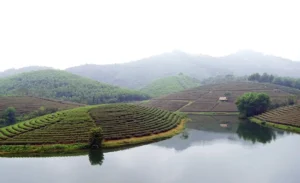 Located in Hoa Quan commune, about 60km from ward center and 200m from Ho Chi Minh road is Thanh Chuong tea hills which has a unique landscape surrounded by water. The air here is cool, the temperature ranges from 17 to 28 degrees Celsius, creating favorable conditions for developing tea growing. This is a famous check-in point, attracting many visitors.
Located in Hoa Quan commune, about 60km from ward center and 200m from Ho Chi Minh road is Thanh Chuong tea hills which has a unique landscape surrounded by water. The air here is cool, the temperature ranges from 17 to 28 degrees Celsius, creating favorable conditions for developing tea growing. This is a famous check-in point, attracting many visitors.
The hills are about 80 hectares wide with dozens of small “oases” lying close together, reflecting on the lake. Visitors to the tea hills do not need to buy an entrance ticket, but need to buy a ticket for a motorboat (15,000 VND one way) or 300.000 VND for private boat.
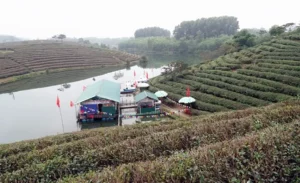 On the hills, there are cafes, visitors can eat local snacks and drink sugarcane juice for 15,000 VND a cup. Some households have built huts on the islet, both to look after the tea and to serve tourists with green tea, peanut candy, cu-do candy; rent hats, costumes, tea picking tools…
On the hills, there are cafes, visitors can eat local snacks and drink sugarcane juice for 15,000 VND a cup. Some households have built huts on the islet, both to look after the tea and to serve tourists with green tea, peanut candy, cu-do candy; rent hats, costumes, tea picking tools…
Not only visiting for the day, you can spend two days and one night staying at Thanh Chuong tea hill. Currently, there are some homestays set up by local people to serve overnight guests. The average room price is about 150,000 VND per night.
Craft villages
Tru Son clay pots
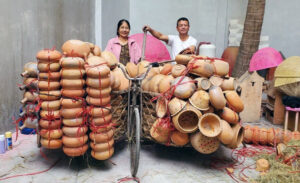 Tru Son clay pot craft village (in Bach Ha commune, Nghe An) has existed since ancient times. According to the ancestors, the village appeared during the Tran Dynasty (1226 – 1400), taught by a princess to the people during the time of land reclamation and settlement. To have good products, the villagers must buy clay from Van Kieu commune and Hop Minh commune, which is a source of red clay, highly flexible, without any additives. The clay is also selected and kneaded very smoothly before shaping.
Tru Son clay pot craft village (in Bach Ha commune, Nghe An) has existed since ancient times. According to the ancestors, the village appeared during the Tran Dynasty (1226 – 1400), taught by a princess to the people during the time of land reclamation and settlement. To have good products, the villagers must buy clay from Van Kieu commune and Hop Minh commune, which is a source of red clay, highly flexible, without any additives. The clay is also selected and kneaded very smoothly before shaping.
To make a clay pot, it must go through many stages. The craftsman must cut, pound, then knead the clay very smoothly, picking out impurities. Although only handmade, the clay pots here have been breathed life into each product by the artisans with great sophistication. The well-kneaded clay will be put on a turntable to create the initial rough shapes of the pots and kettles. Once the rough part is finished, the pots will be polished by the skillful hands of the craftsmen to be smooth and dried in the sun, then put into the kiln.
In the past, after completing the product, the clay pots would be placed in baskets, carried by bicycles, and traveled everywhere to sell.
Brocade weaving
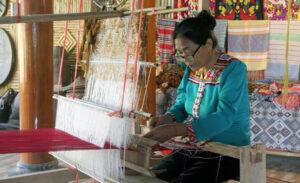 Hoa Tien is an ancient Thai village in Chau Tien commune. The history of the land along with the customs and traditions passed down through generations have created the best conditions for the Hoa Tien brocade weaving profession to form. Many documents say that Hoa Tien village is the cradle of the brocade weaving profession of the Thai people in Nghe An.
Hoa Tien is an ancient Thai village in Chau Tien commune. The history of the land along with the customs and traditions passed down through generations have created the best conditions for the Hoa Tien brocade weaving profession to form. Many documents say that Hoa Tien village is the cradle of the brocade weaving profession of the Thai people in Nghe An.
The brocade materials are taken from nature, such as cotton and flax fibers. Before weaving, the fibers are dyed with natural materials such as young mud, eclipta prostrata, tree bark, turmeric, and Indian almond leaves… and have very unique patterns. Brocade weaving products are produced by traditional manual methods with colorful fabrics and patterns imbued with national identity. The designs are taken from life and stylized to create colorful, elaborate, and creative patterns through the lines on the costumes.
Bamboo and rattan weaving village
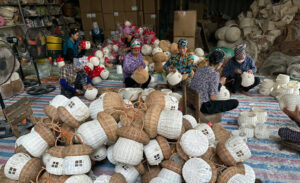 Due to natural characteristics, Nghi Thai has had a weaving profession for hundreds of years, mainly weaving domestic products such as baskets, trays, cages, sieves, bamboo baskets and rattan of Thai Thinh, Thai Hoa, Thai Tho, Thai Loc, Thai Phuc villages, then adding brooms, hammocks, mat weaving of Thai Son, Thai Hung, Thai Hoc hamlets; Thatching houses in Thai Binh and Thai Cat hamlets are the hand-held occupations of local people. Nghi Thai has a team of highly skilled artisans, some of whom have won the Golden Hand Award but have not had the opportunity to develop, especially in creating new designs. Nearly 100 people who used to be teachers of rattan and bamboo weaving for localities in and outside the province are all workers of Nghi Thai commune.
Due to natural characteristics, Nghi Thai has had a weaving profession for hundreds of years, mainly weaving domestic products such as baskets, trays, cages, sieves, bamboo baskets and rattan of Thai Thinh, Thai Hoa, Thai Tho, Thai Loc, Thai Phuc villages, then adding brooms, hammocks, mat weaving of Thai Son, Thai Hung, Thai Hoc hamlets; Thatching houses in Thai Binh and Thai Cat hamlets are the hand-held occupations of local people. Nghi Thai has a team of highly skilled artisans, some of whom have won the Golden Hand Award but have not had the opportunity to develop, especially in creating new designs. Nearly 100 people who used to be teachers of rattan and bamboo weaving for localities in and outside the province are all workers of Nghi Thai commune.
Agarwood making village
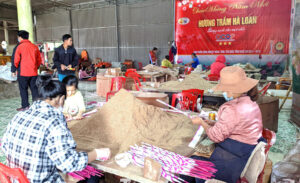 Quy Chau commune, about 150 km from ward center, famous for the traditional craft of making incense, this is where you will witness with your own eyes the stages of making incense, incense sticks, incense coils…
Quy Chau commune, about 150 km from ward center, famous for the traditional craft of making incense, this is where you will witness with your own eyes the stages of making incense, incense sticks, incense coils…
After mixing herbs, rolling, pressing, the raw incense is dried in the yard or on a rack to keep its color, smell and catch fire. Not only can visitors admire the beautiful flowers made from incense, they can also immerse themselves in the aroma of herbs – incense ingredients – such as vetiver roots, aniseed, cardamom, cinnamon, aloeswood, bagasse and some special herbs that are kept as a secret… In the cold weather at the end of the year, the aroma of incense sticks and incense coils makes atmosphere closer than ever.
Traditional Fish Sauce Craft Village
The traditional fish sauce making profession in Duc Chau coastal commune was born nearly 100 years ago, passed down from generation to generation. Duc Chau is one of the “capitals” of fish sauce making in Nghe An.
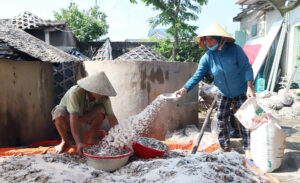
To make a delicious, high-quality, protein-rich fish sauce, it must go through stages such as mixing salt with fish, marinating, fermenting, and taking care of it… All stages of the fish process must be carried out carefully, thoroughly, and take a lot of time and effort to ensure the fish sauce is cooked quickly, evenly, and of excellent quality.
Coming to Duc Chau, you will be truly impressed by the light, shimmering honey-colored color, with the characteristic aroma and salty taste of fish sauce. In addition to fish sauce, the traditional shrimp paste, dried shrimp… of Duc Chau craft village are also very popular. The dried shrimp here is famous for being chewy but still very soft, not broken, fragrant and sweeter when cooked.
Specialties of Nghe An
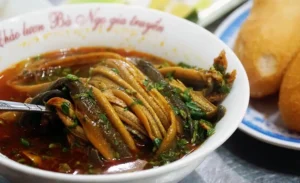
Nghe An has many famous specialties, all of which are rustic dishes, loved by many tourists such as porridge soup, grilled squid, steamed rice flour cakes…
Tourists can stop by to eat eel porridge in Vinh city, at Mai Hac De street or Doc Thiet street. To eat seafood, visitors should visit Cua Lo, Quynh beach.
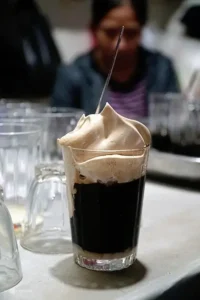 Other famous specialties include pork pies, Cau Don goat, Hung Chau worms, Thanh Chuong chicken, Thanh Chuong pickled vegetables, fish sauce, Nam Dan soy sauce, Dien Chau wet cakes, Do Luong rice paper, medicinal tea, Vinh oranges, cu do candy…
Other famous specialties include pork pies, Cau Don goat, Hung Chau worms, Thanh Chuong chicken, Thanh Chuong pickled vegetables, fish sauce, Nam Dan soy sauce, Dien Chau wet cakes, Do Luong rice paper, medicinal tea, Vinh oranges, cu do candy…
For drinks, try foam coffee at Vinh market – a must-have experience for coffee lovers. In addition to the characteristic bitter taste, foam coffee also has a fatty taste from the foam layer and a characteristic aroma. Depending on your preference, you can request a brown or black cup. When enjoying, you can slowly use the foam layer on top first or stir it well with the coffee layer below.
Cool tea is a specialty of the mountainous district of Quy Hop, the northwest tip of Nghe An. According to local people, Che Dam tea originated from the indigenous Thai people and is a familiar and indispensable drink in daily life.
Source: collected by An
Follow us for the best deal with Vietnam package tours and visa services!
